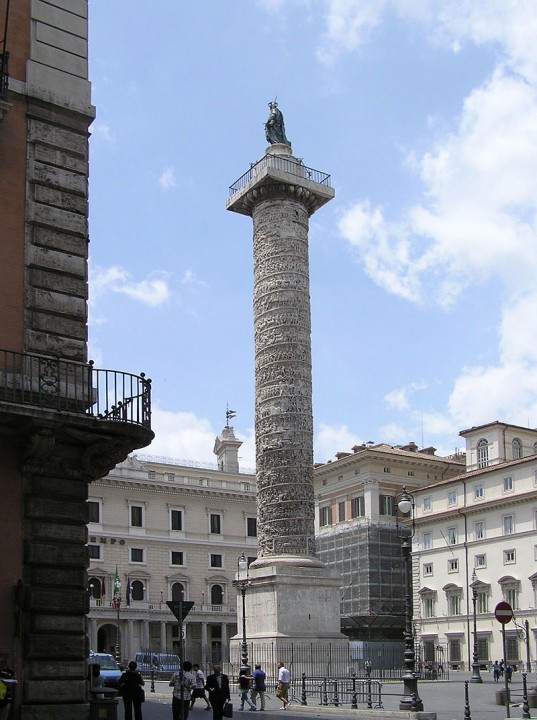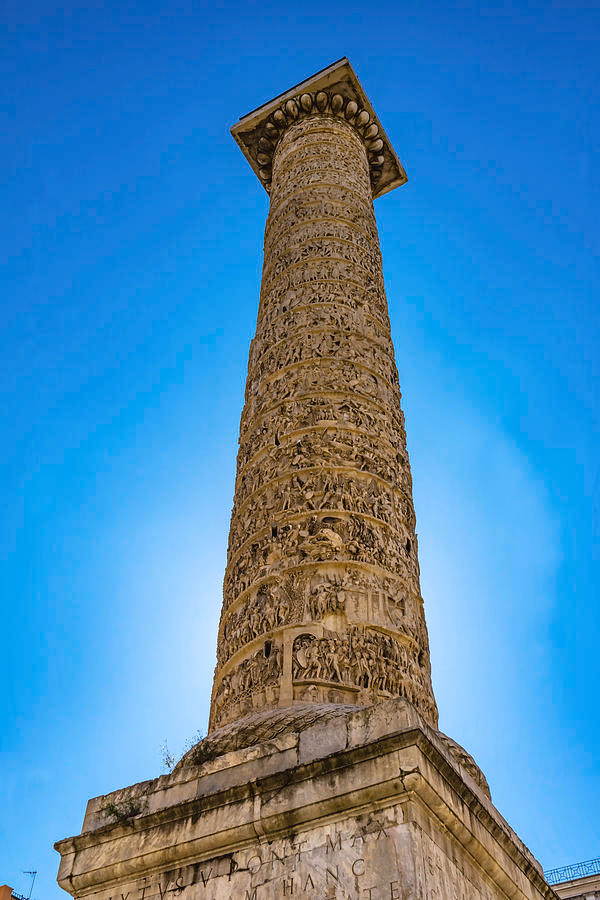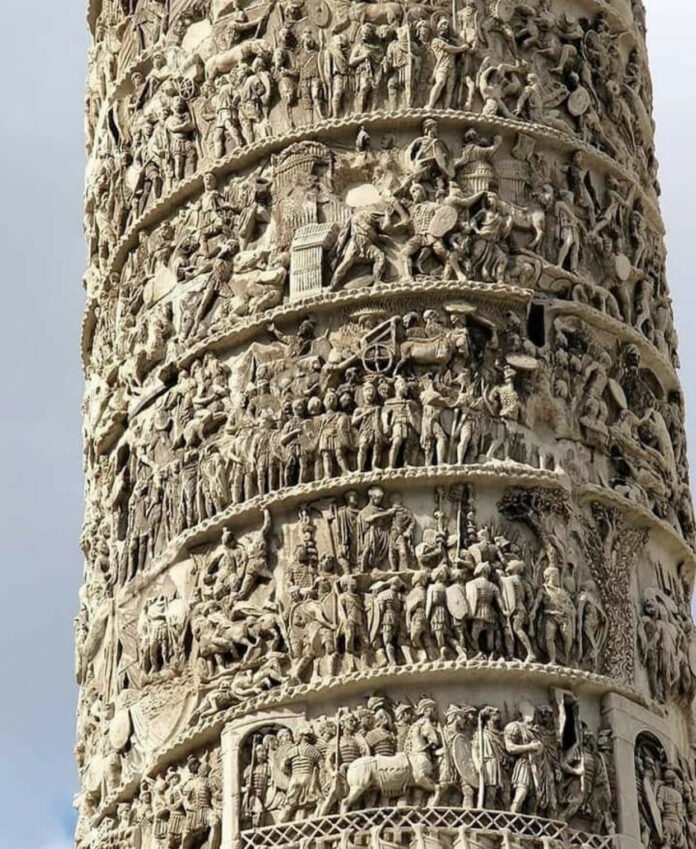Rising from the Heart of Eternal Rome
In the midst of Rome’s Piazza Colonna, a majestic tribute to ancient grandeur stands tall – the intriguing Column of Marcus Aurelius and Faustina. Built by Commodus around 180 CE, this monumental edifice honors his esteemed parents, drawing its design inspiration from the famous Trajan’s Column. The column is intricately carved with vivid scenes depicting the emperor’s victorious military campaigns against the Quadi along the Danube River. Standing 39 meters tall above ground, it conceals an additional 7 meters of its base structure, which awaits excavation.

A Spiral Staircase to the Past
Inside the hollow center of the column, an ingeniously designed spiral staircase ascends to an upper viewing platform. Although the entrance on the Via del Corso side is currently closed to the public, historians believe that an ancient temple dedicated to the deified emperor and his empress once stood nearby, adding to the site’s historical significance.

A Canvas of Conquests and Artistry
Spiraling Tales of Warfare and Logistics
The Doric column features 21 spirals, each standing at an impressive 130 centimeters in height, adorned with intricate relief carvings. These vivid scenes document the military campaigns led by Marcus Aurelius, from battles with the Marcomanni in 172-173 CE to conflicts with the Sarmatians in 174-175 CE. Amidst the intense battlefield depictions are glimpses of the logistical and engineering achievements of Roman warfare, such as troops crossing pontoon bridges.

A Fusion of Artistic Styles
The relief carvings exhibit the characteristic style that would come to define Late Antiquity sculpture. Frontal views and distorted proportions, featuring larger heads and elongated or shortened bodies, highlight the minimized facial features. Plaster casts of these remarkable reliefs are on display at the Museo della Civiltà Romana in Rome, showcasing the artistic mastery of the period.

A Monument Weathered by Time and Intervention
The Ravages of Nature and Human Intervention
Throughout the centuries, the column has weathered the forces of nature and human intervention. The high relief of the carved scenes made them particularly vulnerable to weathering, while lightning strikes and earthquakes further compromised the structure’s integrity. During the Middle Ages, the removal of valuable pins that held the column’s drums in place led to significant shifts in its alignment.

Restoration and Reconfiguration
In 1589 CE, Pope Sixtus V undertook a restoration project that involved reconfiguring the pedestal to accommodate changes in ground level and placing a bronze statue of St. Paul atop the column. However, sculptures depicting conquered barbarians and Victories, originally projecting from the column, were completely removed.

These modifications, along with repairs using grey Proconnesian marble to damaged areas, are visible reminders of the column’s enduring yet altered state, symbolizing Roman militarism and the vanity of human endeavors.



